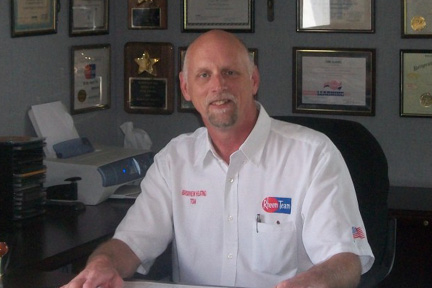Sponsored
Protect Your Family with CO Detectors
by Tom Olecki, Owner, Broadview Heating
Carbon Monoxide. Unfortunately, each year it seems these words are used to describe the cause of death for a local family. Not only do 400 people die each year as a result of carbon monoxide poisoning, another 20,000 visit the emergency room and over 4,000 are hospitalized.
What bothers me most is that almost all these incidents can be avoided with proper furnace maintenance. As you know, times flies and if you haven’t had your appliances serviced in the past year, get it done today. A professional inspection will assure that you furnace is properly inspected and cleaned. The technician will inspect the exhaust system and heat exchanger for proper and safe operation, and also will test for proper carbon monoxide levels.
Once your furnace has been inspected, you still need to protect your family with a carbon monoxide detector.
Placement of the detector is just as important. Never place your detector in the following locations: areas that are humid like bathrooms: anywhere over or very near to your furnace/hot water tank; and at least 15 feet or more away from your stove.
For the best placement for your carbon monoxide detector, I recommend following the manufacturer’s instructions that came with your unit, as each manufacturer has different requirements based on their testing. If you do not have the instructions, here are some basic suggestions:
Try to keep the detector location about waist high as CO becomes diluted near the floor of your home.
A detector should be located on every floor, even the basement.
Bedrooms should have a detector within 10 feet of each bedroom. Just make sure you can hear the detector in the rooms.
Some detectors use batteries, and these batteries may have long since needed replacement so check yours now. Also, a detector’s lifespan is not indefinite and if you have an older detector that is five to six years old, you might want to replace it soon. Newer detectors will even tell you when their time is expired.
If you are buying a new detector, I recommend a model that has a display showing the actual amount of carbon monoxide it is registering. These models are best because they will display readings as low as 1 or 2 parts per million of carbon monoxide. Anything other than 0 PPM in your home is unacceptable so these models with a display give you a great early warning.
Models without a display do not alarm till about 70 PPM and that is after 60-240 minutes at that exposure.
Questions are always welcome. For free help with your heating/cooling system, ask the experts at broadviewheating@sbcglobal.net or call 440-526-7310.

Sponsored by
Questions are always welcome. For free help with your heating/cooling system, ask the experts at broadviewheating@sbcglobal.net or call 440-526-7310.
Opinions and claims expressed above are those of the author and do not necessarily reflect those of ScripType Publishing.

